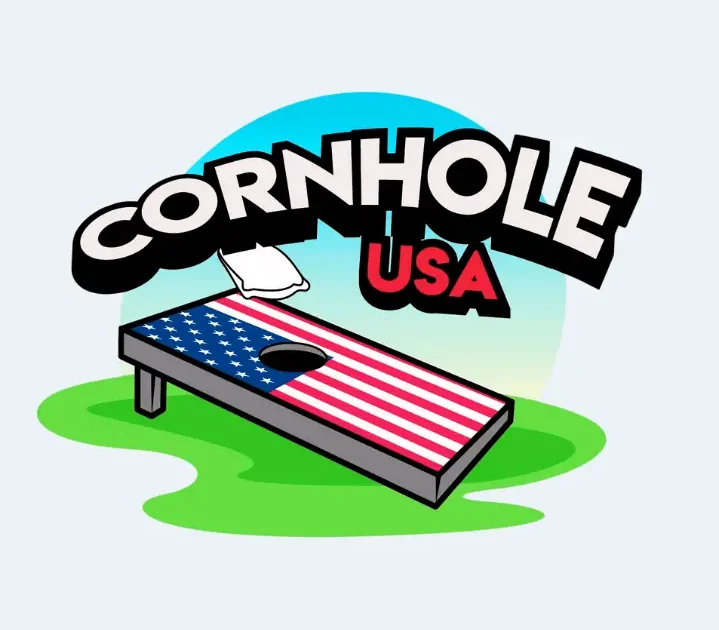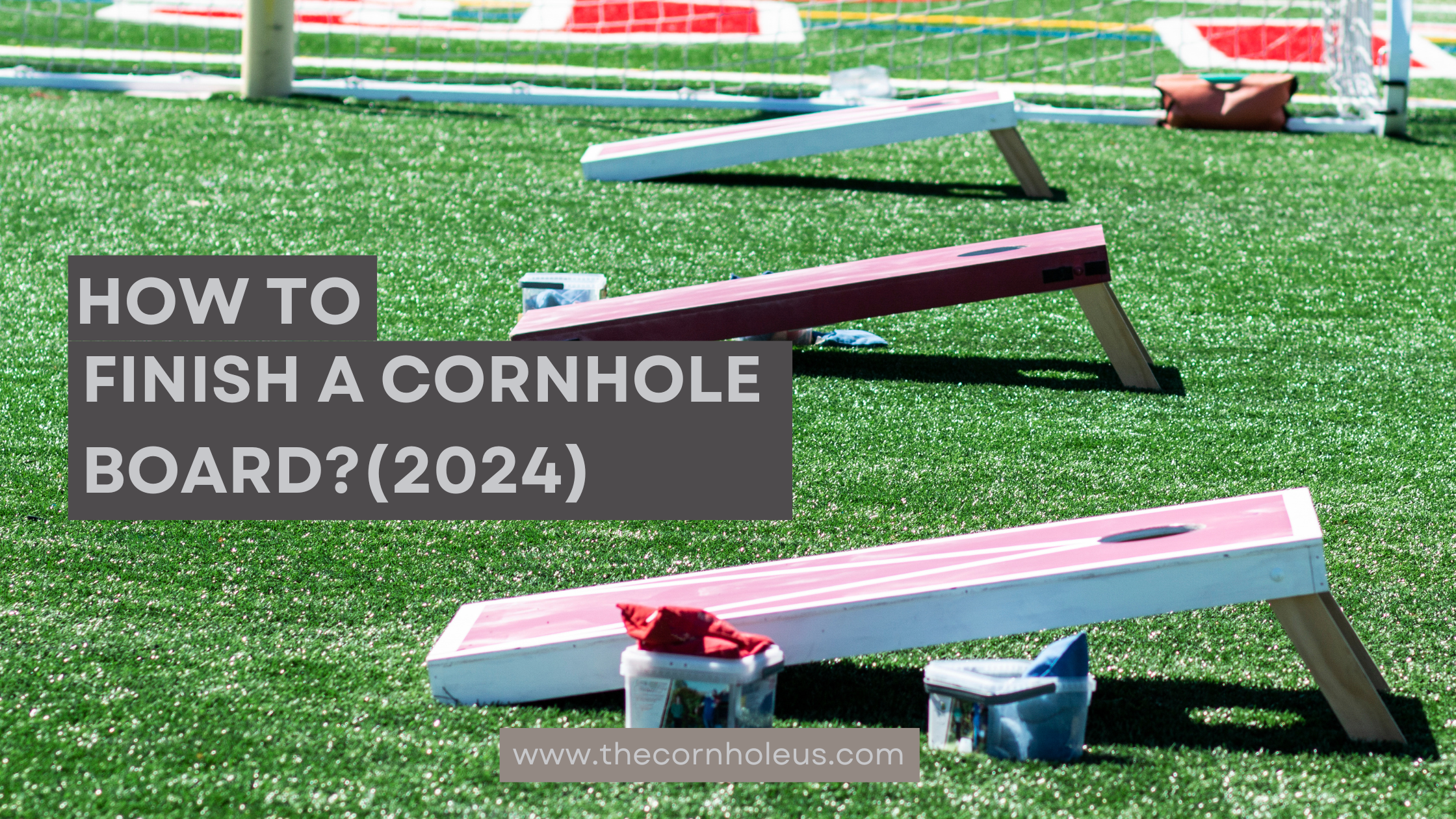Finishing a cornhole board is a simple yet crucial step in creating a durable and professional-looking playing surface. Whether you’re a DIY enthusiast or want to personalize your game, this guide will walk you through the process, ensuring a satisfying result.
We’ll cover the importance of selecting suitable materials and techniques for finishing your cornhole board, ensuring that it holds up against wear and tear and maintains a professional and polished appearance. Whether you’re a casual player or a dedicated enthusiast, mastering the art of finishing a cornhole board is a game-changer. So, let’s dive in and discover how to achieve the perfect finish for your cornhole board.
Choosing the Right Finish for Your Cornhole Board
When it comes to finishing your cornhole board, selecting the right finish is crucial for achieving durability and aesthetics. The choice of finish impacts the board’s overall appearance and longevity, especially when exposed to outdoor elements. Three popular finishes for cornhole boards include polyurethane, polyacrylic, and oil-based finishes. Each offers distinct application processes, benefits, and considerations.
Polyurethane Finish
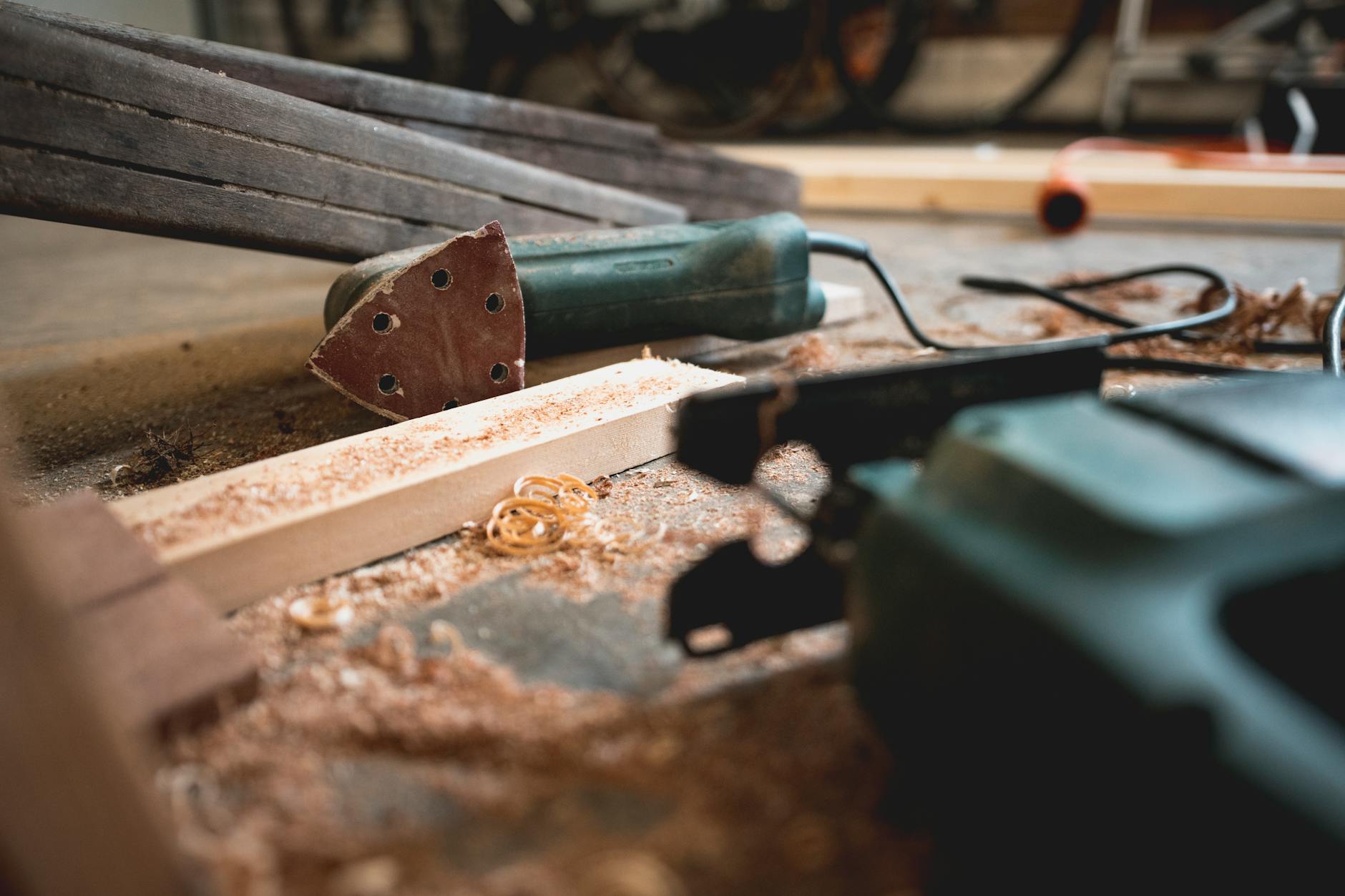
Polyurethane finish is a popular choice for cornhole boards due to its durability and water resistance. It provides a harsh protective coat that withstands the wear and tear of outdoor use. To apply polyurethane, it’s essential to prepare the board’s surface by sanding it smooth. Apply the polyurethane evenly using a high-quality brush, and allow each coat to dry completely before applying the next. Achieving a smooth and even finish requires patience and meticulous application. While polyurethane offers excellent protection, it can sometimes result in a slightly plastic-like appearance.
Polycrylic Finish
Polycrylic finish, a water-based protective coat, is known for its quick drying time and low odour. It provides similar protection to polyurethane but with a more precise finish, preserving the natural colour of the wood. When applying polyacrylic, use a quality synthetic brush to minimize brush marks and ensure an even application. This finish is suitable for cornhole boards due to its resistance to water, mildew, and mould. However, it may not be as durable as polyurethane, making it ideal for indoor use or under-covered outdoor spaces.
Oil-Based Finish
Oil-based finishes, such as tung or linseed, penetrate the wood to enhance its natural grain and colour while providing long-lasting protection. These finishes are suitable for outdoor use, as they repel water and resist mildew and mould. When applying oil-based finishes, working in a well-ventilated area and allowing ample time for drying between coats is essential. While oil-based finishes offer exceptional aesthetics and protection, they may require more frequent maintenance than polyurethane or polyacrylic finishes.
By considering the application process, durability, and aesthetics of polyurethane, polyacrylic, and oil-based finishes, you can select the most suitable finish for your cornhole board based on your specific preferences and usage requirements. Each finish offers unique benefits, and understanding their characteristics will help you achieve a professional-grade finish that enhances the overall appeal and lifespan of your cornhole board.
Learn more about outdoor wood finishes here.
Preparing the Cornhole Board for Finishing
Before applying the chosen finish to the cornhole board, it is crucial to prepare the surface adequately. This involves sanding the board to achieve a smooth texture and cleaning it thoroughly to ensure the finish adheres appropriately.
Sanding the Surface
Sanding the cornhole board is an essential step in achieving a professional finish. Start using medium-grit sandpaper (around 80–100 grit) to remove any rough patches or imperfections on the surface. Afterward, switch to fine-grit sandpaper (about 120–150 grit) to create a smooth and even texture. Be sure to sand along the grain of the wood to avoid causing damage to the board. Remember, the smoother the surface, the better the finish will adhere, so take your time and pay attention to detail.

Photo by Yaroslav Shuraev
Cleaning and Dust Removal
After sanding, it’s crucial to thoroughly clean the cornhole board to remove any dust and debris. Use a tack or soft, lint-free cloth to wipe down the entire surface, ensuring all sanding dust is completely removed. Additionally, using a mild cleaner or wood-friendly solvent can help eliminate any remaining particles. A clean and dust-free surface is vital for the finish to adhere evenly and maintain a professional look.
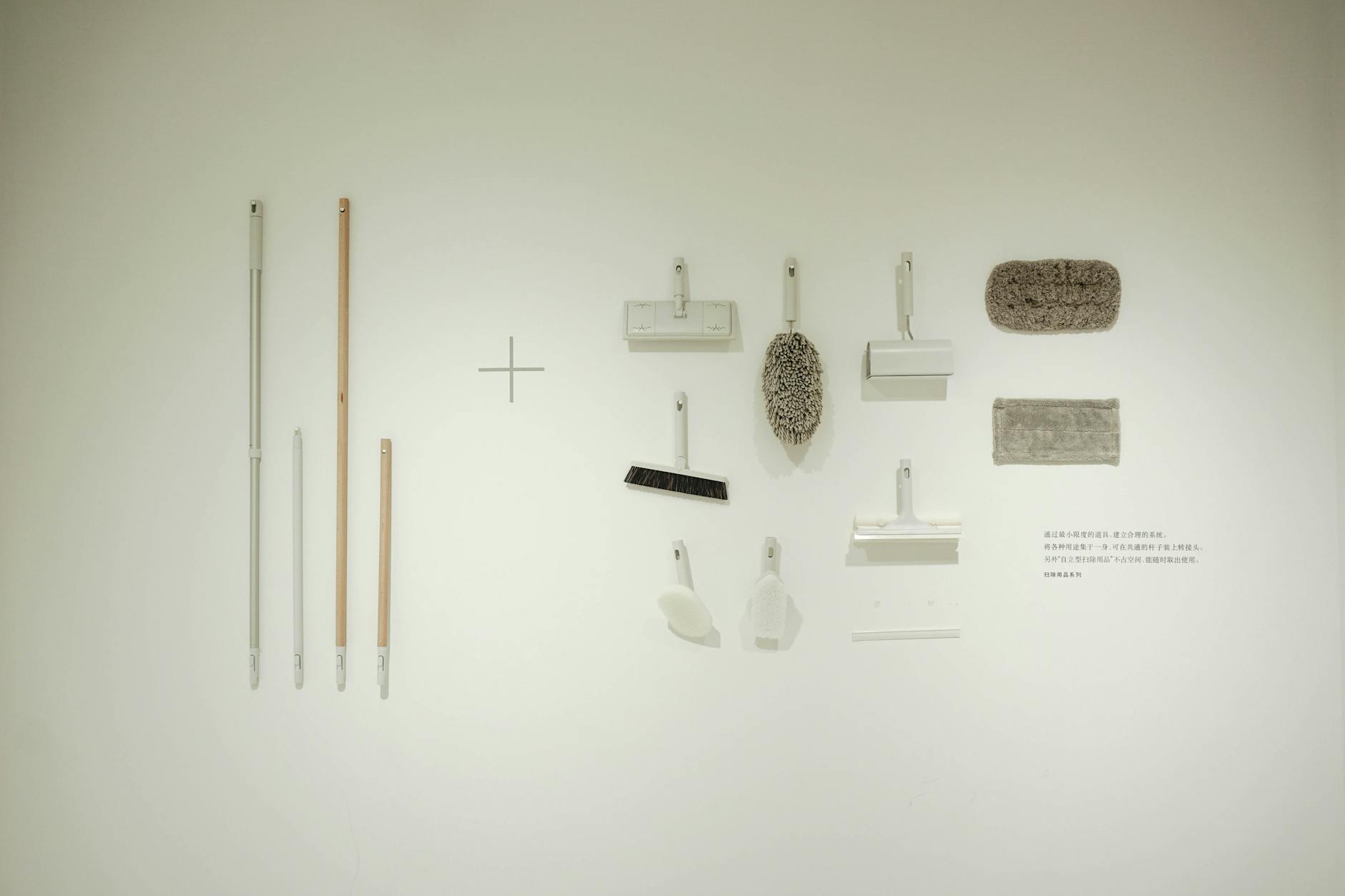
Photo by Maggie Zhan
Applying the Finish to the Cornhole Board
Before applying the finish to your cornhole board, it’s essential to select the appropriate method and consider the number of coats and drying time for a perfect outcome.
Brush or Spray Application
When it comes to applying the finish to your cornhole board, you have the option of using a brush or a spray. Each method has its advantages. A meeting allows for more control over the application, ensuring that the finish reaches all the nooks and crannies of the board. On the other hand, a spray offers a quicker and more even application, ideal for achieving a professional-looking coat. If you opt for a brush, ensure it’s of good quality to prevent bristle shedding, and for a spray, choose a well-ventilated area to avoid overspray.
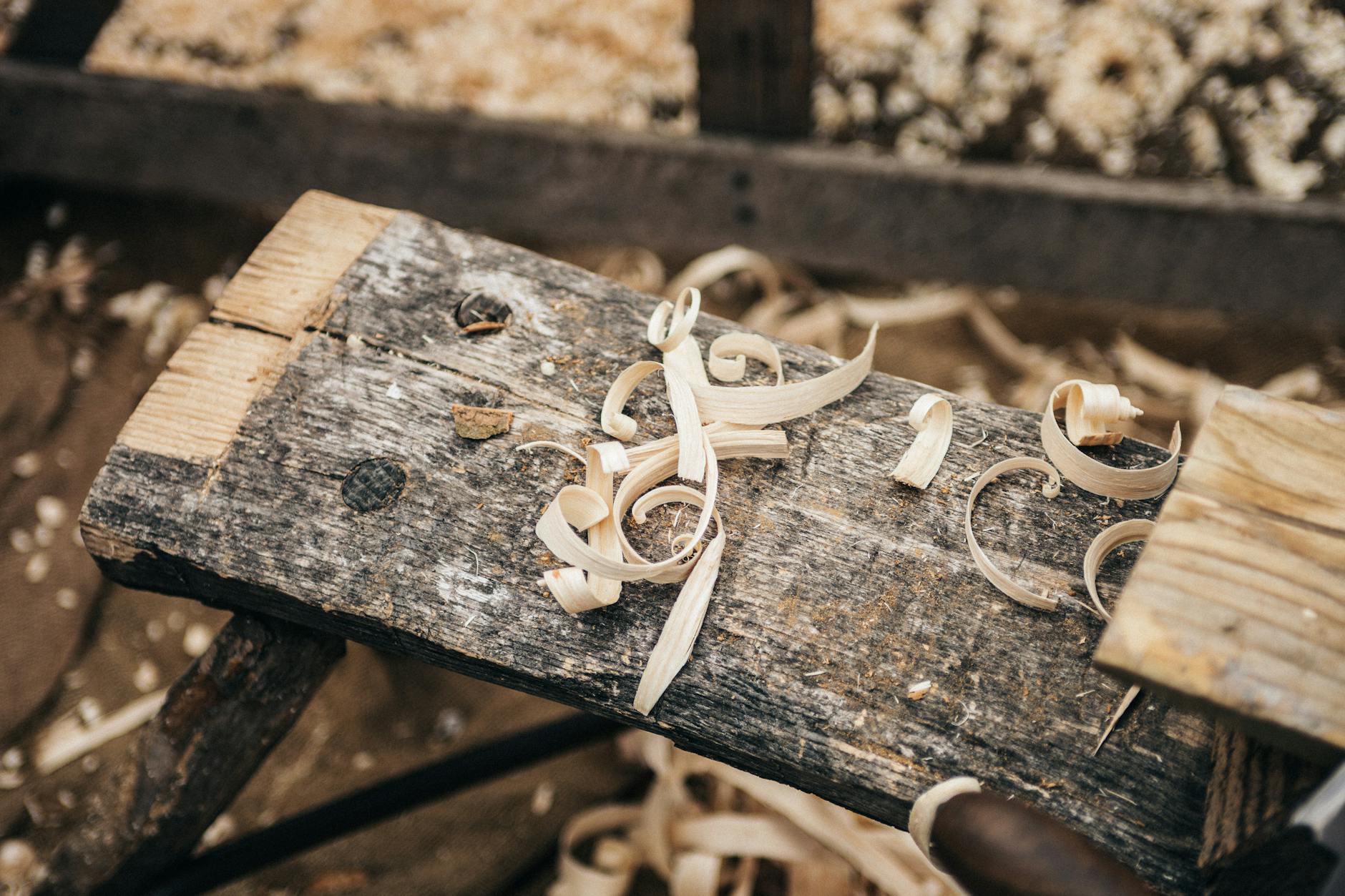
Photo by Clem Onojeghuo
Number of Coats and Drying Time
The number of coats required for your chosen finish depends on the type of wood and the desired level of protection and sheen. Two to three coats are recommended for outdoor use to ensure durability. Ensure each coat has sufficient drying time per the product instructions, usually 24 hours, to allow the finish to cure correctly and provide long-lasting protection. Rushing this stage can compromise the quality of the final result and lead to premature wear and tear.
Remember, patience during drying is critical to achieving a flawless finish that will withstand outdoor conditions.
In summary, choose the application method that suits your preferences and carefully follow the recommended number of coats and drying times for a stunning and resilient finish on your cornhole board.
Final Touches and Maintenance
Finishing a cornhole board is a labor of love, and ensuring the final touches are done right is crucial to the longevity and appearance of the board. Let’s delve into the essential steps for final touches and ongoing maintenance.
Sanding Between Coats
Sanding between coats is the secret to achieving a flawlessly smooth and professional finish on your cornhole board. This crucial step helps to remove imperfections, level the surface, and prepare it for the next coat of finish.
When sanding between coats, it’s recommended to use fine-grit sandpaper, such as 220 to 400 grit, to avoid removing too much finish. Rub the entire surface toward the wood grain to maintain a consistent finish. Additionally, for water-based finishes, lightly sanding after the first coat helps to raise the wood grain, providing a smoother result in subsequent coats.
You can refer to resources like Bailey Line Road and Fine Woodworking for more in-depth advice on sanding between coats.
Maintenance Tips
To preserve the pristine finish of your cornhole board, regular maintenance and care are essential. Here are some practical tips for maintaining the appearance and durability of your board:
- Regular Cleaning: Wipe down the board with a damp cloth to remove dirt and debris after each use. Use a mild soap solution for tougher stains, and avoid harsh chemical cleaners that could damage the finish.
- Protective Measures: Consider using a cover or storing the board in a sheltered area when not in use to shield it from the elements and prevent unnecessary wear and tear.
- Periodic Inspection: Check for any signs of wear, such as scratches or dullness, and address them promptly to maintain the board’s appeal and integrity.
By implementing these maintenance tips, you can ensure that your cornhole board retains its pristine finish and remains a source of entertainment for years to come.
For more insights on the significance of sanding between coats of finish and additional maintenance recommendations, feel free to explore further resources such as Reddit r/woodworking and Five Star Painting.
Remember, a little maintenance goes a long way in preserving the beauty and durability of your cornhole board.
Frequently Asked Questions
What is the best finish for outdoor use?
For outdoor use, the best finish is a marine-grade varnish. This type of varnish is specifically formulated to withstand harsh elements, including sunlight, moisture, and temperature changes. Its durable and protective properties make it ideal for outdoor furniture, decks, and other wooden surfaces. Marine-grade varnish creates a hard, glossy surface that not only enhances the natural beauty of the wood but also provides long-lasting protection against UV rays and water damage. Its application may require multiple coats and proper surface preparation for optimal results. Still, the end product is worth the effort, ensuring a beautiful and resilient finish for outdoor applications.
How long should oil-based finishes dry between coats?
Oil-based finishes typically require 24 to 48 hours to dry between coats. This drying time allows for proper adhesion and prevents the finish from becoming tacky or adhering correctly. Following the manufacturer’s recommendations for drying times is crucial to achieve the best results and ensure a durable and long-lasting finish. Rushing the drying process can compromise the overall quality and performance of the finish, so patience is critical when working with oil-based finishes.
Can a clear coat be used to finish a cornhole board?
Yes, a clear coat can be used to finish a cornhole board. Applying a clear coat provides a protective layer and enhances the natural beauty of the wood. It helps to seal the surface and protect it from moisture, dirt, and scratches. When choosing a clear coat, look for one designed for outdoor use to ensure maximum durability. Make sure to sand the board thoroughly before applying the clear coat to ensure a smooth and professional finish.
Conclusion
In conclusion, achieving a high-quality and durable finish for your cornhole board is crucial for not only enhancing its appearance but also ensuring its longevity. You can protect the wood from outdoor elements and create a smooth playing surface by choosing the right finish and following proper techniques, such as applying polyurethane or polyacrylic coatings.
Additionally, sanding between coats and allowing sufficient drying time are essential steps to achieve a professional-grade finish. Whether it’s for personal enjoyment or as a professional touch to your cornhole board business, the finishing process plays a significant role in the overall satisfaction and performance of the game.
